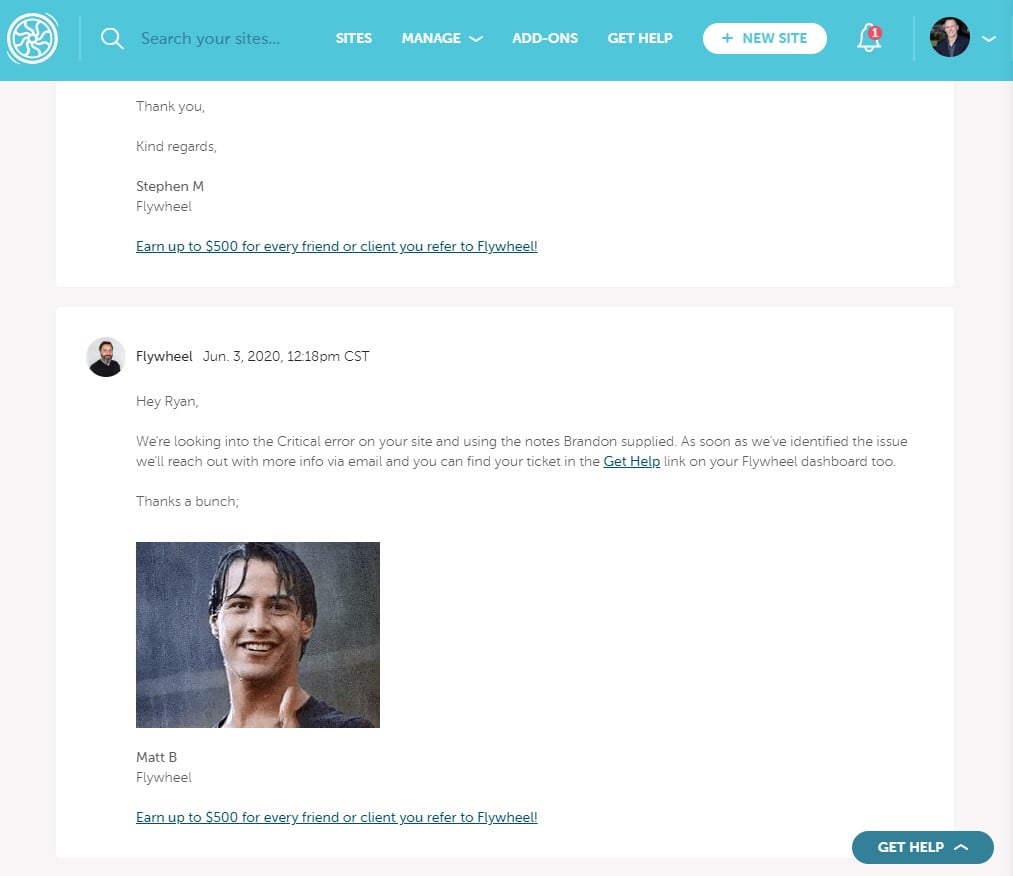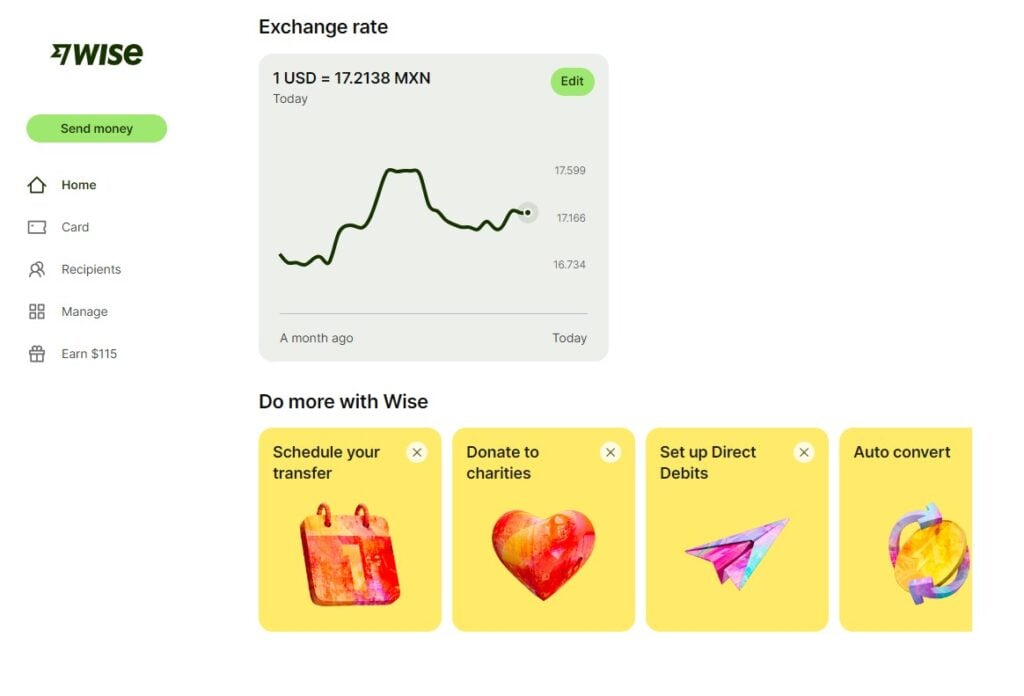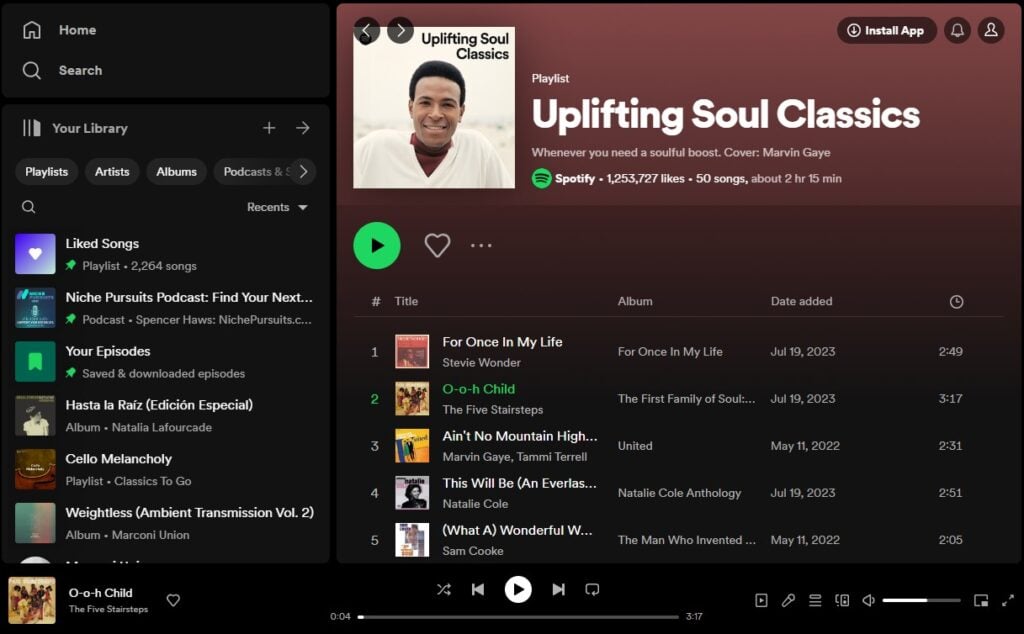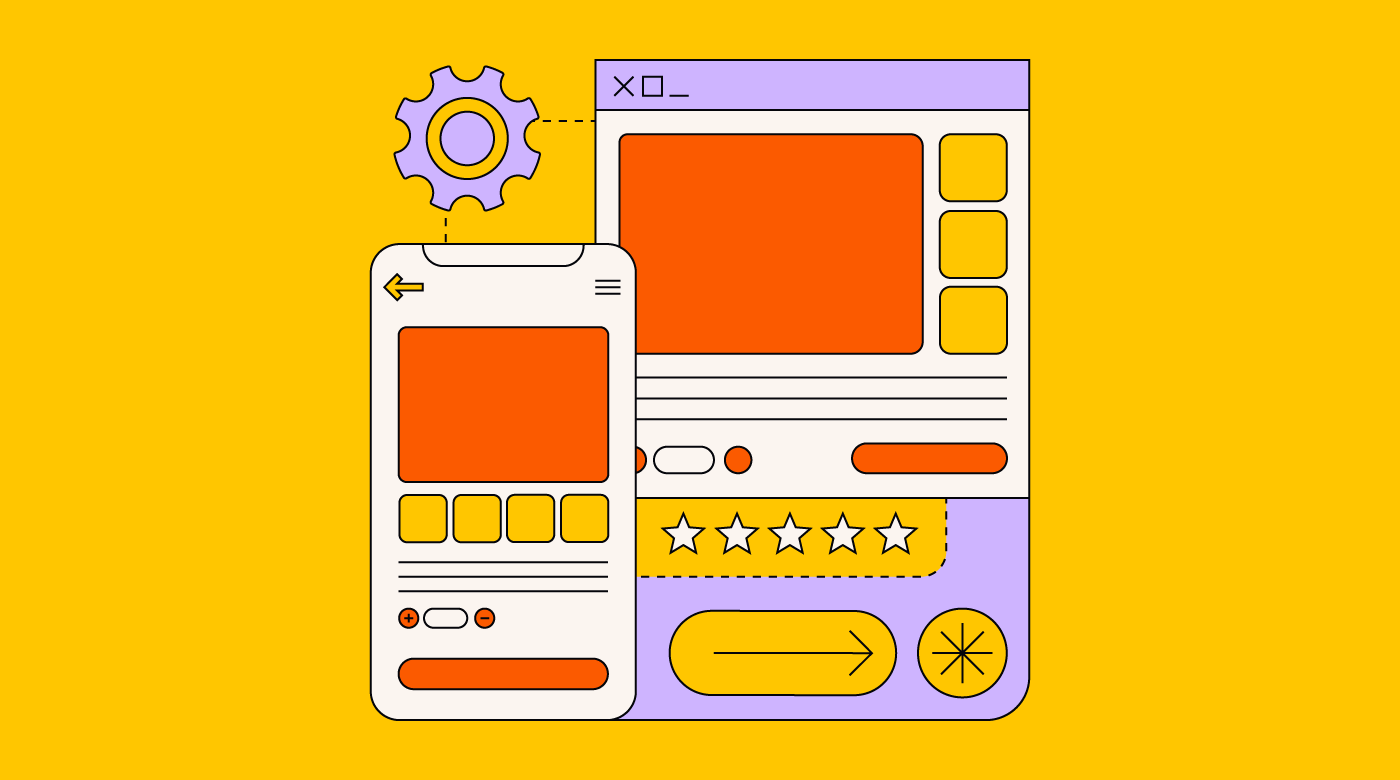There’s nothing that unites customers more than a shared hatred of long hold times. An Accenture survey of over 12,000 customers identified hold times as one of the most frequent annoyances, closely followed by the 89% of customers who are frustrated when they have to repeat their issue to multiple representatives. (Frankly, the other 11% possess a level of patience that’s beyond me).
The term ‘omnichannel customer experience’—buzzword-y though it may be—is a simple pro-customer philosophy that nudges brands to avoid clunky cross-channel experiences, and instead, make it as easy and seamless as possible for customers to do business with them. Most companies have a real need for this kind of initiative: 58% of customers are frustrated with inconsistent experiences across channels.
So, what does ‘omnichannel’ actually mean for SaaS brands—and how can you adjust your CX strategy to ensure a better experience no matter the channel customers are using?
In this omnichannel CX guide for SaaS, I’ll take you through all of that and more:
- What is ‘Omnichannel’?
- A Guide to Omnichannel Customer Experience for SaaS Brands
- Omnichannel Examples from SaaS Brands That Get It Right
- Navigating the Omnichannel Landscape
What is ‘omnichannel’?
‘Omnichannel,’ literally meaning “all channels,” is a marketing term that first surfaced in a retail CX context around 2010. In an era where only 20% of the population had smartphones and ecommerce was still something of a novelty, ‘omnichannel’ started as a rallying cry to encourage brick-and-mortar retail brands to integrate online and offline channels.
Today, we live in different times. A seamless experience across web, mobile, and other devices is the price of entry for brands. Anything less leads to disappointed customers. Gen Z consumers don’t even think in terms of omnichannel or not—they just expect their experience to be flawless across whatever channel they happen to be using.
Omnichannel customer experience takes seamlessness to another level by looking at the entire customer journey across web, mobile, social media, email, and in-store interactions. The goal is create a “single source of truth” encompassing each customer’s interactions with your brand.
By syncing this data throughout your organization, you give customers a consistent experience, allow them to jump between channels without losing context and—critically—help sales, marketing, and support teams provide a unified brand experience.
What does omnichannel commerce mean for SaaS companies?
Although omnichannel commerce originated in a “brick-and-mortar versus online sales” context, that dichotomy doesn’t mean much to SaaS companies.
Most SaaS brands do business entirely online. And, with the exception of high-value B2B SaaS, sales and marketing don’t often happen in person either.
Here’s what omnichannel commerce means for SaaS companies:
- A seamless customer journey: A 2019 Salesforce report found that 67% of customers jump between channels to complete a transaction. However, friction between those channels can kill conversions. As you guide your customer along their journey, preserve their data so they don’t struggle when switching between devices or channels.
- Personalization: Modern digital experience platforms (DXPs) are sophisticated at understanding your users’ behavior, giving you a full picture of customers across multiple channels. DXPs provide a central hub for customer data, and give you the tools to segment customers and provide personalized experiences and workflows.
- Multi-channel customer engagement: How many channels is enough for SaaS companies? Over half of brands use at least eight channels; common ones include email, social media, websites, phone, and live chat. Experimenting with new ways to reach customers pays off, as the most effective channels may not always be what you first assume. For example, one study found that omnichannel strategies that involved SMS were 47% more likely to end in conversions.
- Consistent customer experience: Whether you’re sending SMS messages or creating email onboarding sequences, be intentional about how each channel fits into the customer journey. Customers interacting via your mobile app need to receive a similar experience as those on live chat and those who’ve called your support line. Whatever channel customers choose, their interactions with your company should feel effortless and on-brand.
Benefits of building omnichannel
The case for building omnichannel is clear: providing a seamless experience across channels leads to happy customers, and omnichannel customers have a 30% higher lifetime value.
The challenge for many companies? Resources. Omnichannel means—by definition—that you’re committing to many channels. More channels means more work and greater investment.
But there’s good news if you’re still on the fence: it pays off, and the benefits to an omnichannel approach get even more valuable as you grow.
- Omnichannel customers spend more: A study of 46,000 shoppers published in the Harvard Business Review found that omnichannel customers spent 10% more than single-channel customers. And a 2020 analysis by Omnisend found that campaigns featuring three or more channels resulted in a 287% higher purchase rate.
- Going omnichannel can save you money: If you’re currently running a disconnected multichannel approach—a few email blasts here, an update to the mobile app there, but nothing particularly coordinated—a push to “go omnichannel” can save you money in the long run. Here’s why: you’ll naturally streamline your operations. By syncing customer data across your company, you’ll see a reduced customer service burden, more opportunities for marketing automation, and improved business outcomes.
- You’ll learn more about your customers: For businesses, one of the biggest benefits of going omnichannel is the doors it opens for more data-driven decision making. By tracking customer behavior closely across channels, you’ll be able to launch more effective marketing strategies and design a customer journey that creates happier customers.
- Omnichannel benefits scale as you grow: The omnichannel approach lends itself to scalability. While it can feel like a big task for smaller businesses to implement omnichannel, the foundation you put in place makes scaling easier, allowing for personalized interactions and a high level of service even as you grow.
- Customers expect omnichannel: Omnichannel is no longer optional. The average US adult uses four connected devices, and they expect consistent interactions not only across those devices but across different channels. Customers want to interact on their terms—their preferred device and their preferred channel—and a poor experience may lead them to give up (or switch to a competitor).
Convinced that an omnichannel customer experience approach is a good thing?
Great—it’s time to dig into the details and understand the core components that drive omnichannel CX for SaaS brands.
A Guide To Omnichannel Customer Experience For SaaS Brands
If you’re a SaaS brand building out an omnichannel initiative, you’ll want to focus your efforts primarily in three areas: omnichannel experience design, omnichannel marketing, and omnichannel customer support.
Here’s what you need to know to get started.
1. Omnichannel experience design
The tempting option for SaaS brands when thinking about omnichannel experience design is to focus on tactics.
“Should I incorporate SMS into user workflows?”
“What digital channels should I choose?”
While these questions are important, they shouldn’t come first. Instead, start with the customer journey and think about the customer’s experience holistically.
Ask questions like:
- What happens if customers start signing up for your SaaS product on a mobile device, but then they jump to the web? How will you follow up with them if they abandon the checkout process?
- Is each part of your product experience context-aware and personalized?
- Is your branding and messaging consistent across channels?
Consider every possible type of customer interaction to make sure no matter how customers choose to interact with your brand, their next steps are always seamless.
Keep these core principles in mind:
- Cohesive branding: No matter what channel customers use, the brand experience should feel the same. That goes for buttons, icons, colors, logos, and other visual elements.
- Ease of use: Using your product should, from the customer’s perspective, feel like magic: everything happens at the right time on the right channel. Slack, for example, takes this literally with a “magic link” that they send via email—a passwordless login button that takes all the hassle out of joining a new Slack group.
- Seamless channel switching: Customers should be able to jump from one channel to the other with no loss of context or capabilities. Streaming apps like Netflix do a good job of this, allowing you to pick up where you left off no matter the device. (Curiously, and somewhat inconveniently, I noticed that you’re not able to update your credit card from the Netflix mobile app; instead, you need to go to their website. Make sure to consider the admin aspects of your product on different channels, too.)
2. Omnichannel marketing
Marketing campaigns constitute customers’ first exposure to your brand and set the stage for the customer relationship. Omnichannel marketing means unifying your message across all the various customer touchpoints and channels you use when reaching your audience.
Omnichannel marketing boils down to two themes:
- Keeping track of omnichannel customer behavior: As early as 2013, a Google study found that 90% of customers were jumping between devices to complete tasks, using an average of three devices each day. Today, that trend has only accelerated. To understand your customers, use tools like CRMs to get visibility over the full customer journey, whether your customers are replying to marketing emails, making a phone call, or using your mobile app’s live chat function. Set KPIs to measure the impact of your marketing activities across channels.
- Using that customer data to personalize your marketing: Once you start gathering customer data, you can supercharge your marketing with targeted ads, personalized workflows, and recommendations based on customer behavior. An Accenture study found that 91% of consumers are more likely to shop with brands that personalize their communication and recommendations. Omnichannel personalization makes this effect even more powerful.
3. Omnichannel customer support
One of my customer service pet peeves is when companies force you to call their support lines without providing another option to reach them. Over time, I’ve gravitated to services and products that let me interact in ways that work better for me. When it comes to support, I want options.
And—no surprise—other consumers feel this way too. The 2023 Zendesk CX Trends report found that brands that provided omnichannel support were rated better across key CX metrics.
An omnichannel approach to customer support starts with designing a way to store all customer support interactions and allow easy access to this data across your organization, giving customer support reps full access to historical context whenever they need it. You can also reduce the burden on your support team by deploying omnichannel AI chatbots and pointing customers toward easy-to-reference knowledge base articles.
To make all this possible, it’s best to have an integrated customer service tool that handles all of this for you, collecting customer support inquiries across channels and making the experience seamless for both customers and agents.
Omnichannel Examples From SaaS Brands That Get It Right
When I come across a SaaS brand with a seamless experience, it sticks with me. Each of the SaaS brands I admire has a different omnichannel CX strength: some are focused on omnichannel experience design, others on marketing, others on support.
But here’s the thing—there are many diverse routes you can take to connect with customers in a meaningful way on the channels that matter to them. The following omnichannel marketing examples demonstrate a few of the many valid approaches you can take, depending on the needs of your business.
1. Flywheel
I’m a long-time customer of Flywheel, a WordPress website hosting company. Web hosting is a commodity—what keeps me so loyal is the brand’s omnichannel support. Typically, I start support inquiries via live chat on their website, but their integrated system allows me to drop out of the chat whenever I need to and continue support conversations by email. Flywheel’s reps always check my chat history so I don’t have to repeat myself.
As a customer, it gives me valuable peace of mind to know that if I submit a chat inquiry, someone will always respond, and support reps will always follow up.
To give you an example of how omnichannel support works in practice, here’s a real-life support experience I had:
- I messaged one of Flywheel’s reps via their live chat describing my issue.
- A second rep reached out via email to let me know they were aware of that conversation, had seen the notes from it, and were working on a fix.
- A third rep emailed with a fix that worked.
- A fourth rep emailed asking me if I had any other questions.
All in all, this interaction took place over two channels and included input from four customer support reps. But from my end, it was entirely seamless, with no loss of context even as I was juggled between multiple agents.
That’s exactly how brands should do omnichannel support.

2. Wise
In 2009, I lived overseas and sent money home regularly. This was my process:
- Withdraw cash from the ATM.
- Convert the cash to dollars, take it to Western Union, and wire it to my dad back home.
- Ask my dad to physically pick up the cash and deposit it in my bank account.
Given this burdensome state of affairs, no one is happier than me that sending money abroad has gotten easier. (Except, perhaps, my dad).
I now use Wise multiple times per month to move money internationally. It still fascinates me that I can transfer hundreds or thousands of dollars with a few clicks. Wise gives me an ‘estimated time of arrival’ each time I do a transfer (”Your money should arrive in under one hour”) and sends push notifications to my phone when the money arrives.
Whether I’m using the web app or the mobile app, and whether I’m converting to pesos or euros, the customer experience is rock-solid and consistent.

3. Spotify
Spotify, the music streaming app, takes its omnichannel presence seriously. You can access Spotify via the standard platforms—desktop, web, and mobile—but Spotify also goes a step beyond, adding Android Auto, Apple CarPlay, smart TVs, Alexa, Apple Watch, and many more devices.
Even more impressive, the user experience is fantastic across all of those platforms. Spotify provides one of the best examples of omnichannel seamlessness: you can jump from your smartphone to your Alexa speaker to your car without issue. Spotify will remember the song you were listening to even as you switch devices.
Spotify also provides a lesson in effective omnichannel personalization. Depending on factors like your location and listening history, you automatically get customized playlists that make it easier to discover new music and reduce the friction of using the app.
No matter what device you’re on, Spotify is a prime example of SaaS omnichannel consistency.

Navigating The Omnichannel Landscape
Steering your SaaS company toward a greater focus on omnichannel customer experience can feel intimidating at first—there’s data to collect, new systems to implement, and an incredible number of opportunities to evaluate.
Just take the process step by step. Start by uniting any customer data that’s in silos and unifying it in a CRM or similar CX tool that’s easily accessed across your organization. From there, you’ll have better insights into the customer journey; you’ll understand users better; and you’ll be in a position to create a personalized marketing, support, and product experience that’s consistent across channels, making for faster growth and happier customers.
Ready to keep building a more seamless customer experience? Maintain your edge by subscribing to our newsletter to get the latest CX tips delivered straight to your inbox.


